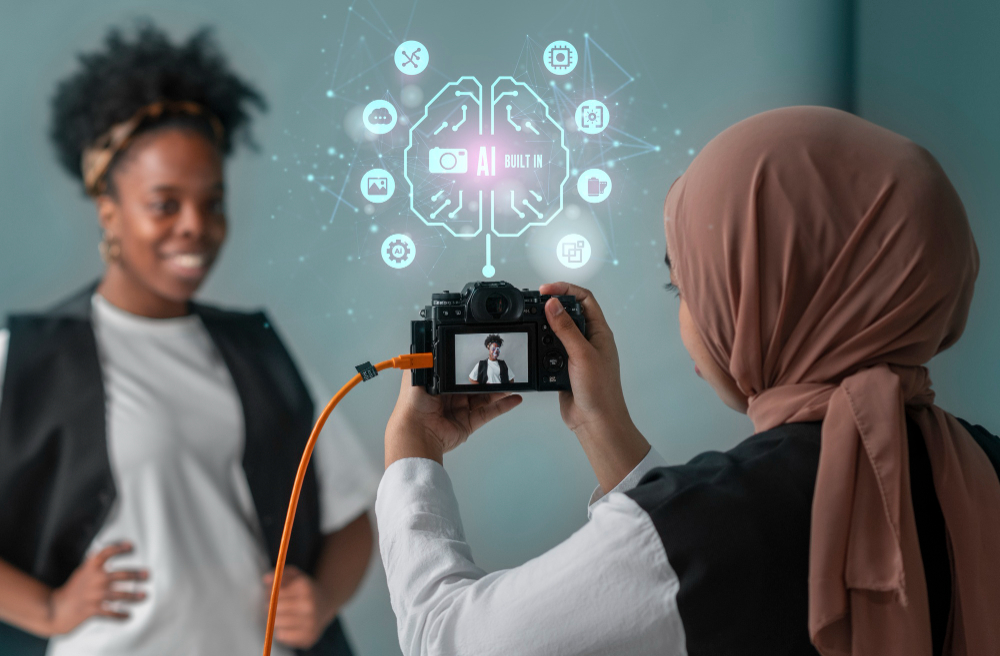
In the realm of scientific discovery, the integration of artificial intelligence (AI) has ushered in a new era of innovation and possibility. AI, with its ability to process vast amounts of data and identify complex patterns, has become a powerful tool for researchers across various disciplines. From drug discovery to astrophysics, AI algorithms are revolutionizing the way we approach scientific exploration.
One remarkable application of AI is in accelerating drug discovery processes. Traditional methods for identifying potential drug candidates are often time-consuming and costly. However, with AI-driven approaches, researchers can analyze vast molecular datasets and predict the efficacy of various compounds with unprecedented speed and accuracy. This has led to the expedited development of novel treatments for a wide range of diseases, offering hope to millions of patients worldwide.
Furthermore, in fields like astrophysics, AI algorithms are assisting scientists in analyzing immense volumes of astronomical data, helping to uncover hidden phenomena and unraveling the mysteries of the universe. The collaboration between AI and human researchers is paving the way for groundbreaking discoveries that were once thought impossible.
The Intersection of AI and Scientific Discovery
AI and scientific discovery have a long and intertwined history. The term “artificial intelligence” was coined by John McCarthy in 1956, at a conference that brought together some of the pioneers of computer science, mathematics, psychology, and neuroscience. The conference aimed to explore the possibility of creating machines that could simulate human intelligence and behavior. Some of the topics discussed at the conference included learning, reasoning, natural language, neural networks, and self-improvement. These topics are still relevant and active areas of research in AI today.
AI’s emergence in scientific research can be traced back to the 1960s and 1970s, when some of the early AI systems were developed to assist scientists in solving problems and performing tasks. For example, DENDRAL was a system that could deduce the molecular structure of organic compounds from mass spectrometry data. MYCIN was a system that could diagnose infectious diseases and recommend treatments based on a set of rules. AM was a system that could discover new mathematical concepts and theorems by applying heuristic search and analogy. These systems demonstrated the feasibility and utility of AI in scientific discovery, and inspired further research and development in the field.
The current state of AI in scientific discovery is characterized by rapid and remarkable progress, driven by the convergence of several factors. First, the availability of large and diverse data sets, such as genomic sequences, chemical structures, astronomical images, and climate measurements, provides rich and valuable sources of information for AI to learn from and analyze. Second, the advancement of computing hardware and software, such as GPUs, cloud computing, and parallel processing, enables AI to handle complex and computationally intensive tasks, such as deep learning, reinforcement learning, and natural language processing. Third, the innovation and improvement of machine learning algorithms, such as convolutional neural networks, recurrent neural networks, transformers, and generative adversarial networks, enables AI to perform tasks that were previously considered impossible or impractical, such as image recognition, speech synthesis, text generation, and style transfer.

AI is now being applied in various scientific fields, such as biology, chemistry, physics, astronomy, geology, ecology, and medicine, to name a few. AI can assist scientists in various stages of the scientific process, such as data collection, data analysis, data interpretation, hypothesis generation, hypothesis testing, experiment design, result evaluation, and knowledge synthesis. AI can also collaborate with scientists, by providing feedback, suggestions, and explanations, and by learning from human input and guidance. AI can even act as a scientist, by conducting autonomous and self-directed research, and by discovering new facts, concepts, and laws of nature.
Some of the examples of AI applications in scientific discovery are:
- AlphaFold: A deep learning system that can predict the three-dimensional structure of proteins from their amino acid sequences, with unprecedented accuracy and speed. Protein structure prediction is a fundamental and challenging problem in biology, as it is essential for understanding the function and interactions of proteins, which are the building blocks of life. AlphaFold can help scientists design new proteins, drugs, and enzymes, and advance the fields of biotechnology, bioengineering, and medicine.
- Eureqa: A symbolic regression system that can discover the underlying equations and models that govern complex phenomena, such as biological systems, physical systems, and social systems. Eureqa can automatically generate, test, and refine hypotheses, and find the simplest and most accurate mathematical expressions that fit the data. Eureqa can help scientists uncover the hidden laws of nature, and explain the mechanisms and dynamics of various systems.
- ChemBERTa: A natural language processing system that can understand and generate chemical structures and reactions, using a transformer-based neural network. ChemBERTa can encode and decode molecular graphs, and perform tasks such as molecular property prediction, reaction prediction, retrosynthesis, and molecule generation. ChemBERTa can help scientists explore the vast and diverse chemical space, and discover new molecules, materials, and pathways.
These are just some of the examples of how AI is revolutionizing scientific discovery, and there are many more to be explored and developed. In the following sections, we will dive deeper into some of the machine learning algorithms that power AI, and some of the scientific fields that benefit from AI.
Advancements in Machine Learning Algorithms
Machine learning is a branch of AI that focuses on creating systems that can learn from data and experience, without being explicitly programmed. Machine learning algorithms can be broadly classified into three categories: supervised learning, unsupervised learning, and reinforcement learning. Supervised learning is when the system learns from labeled data, such as images with captions, or texts with summaries. Unsupervised learning is when the system learns from unlabeled data, such as images without captions, or texts without summaries. Reinforcement learning is when the system learns from its own actions and rewards, such as playing a game, or navigating a maze.
In this section, we will discuss some of the advancements in machine learning algorithms that have enabled AI to achieve remarkable results in scientific discovery. We will focus on four types of algorithms: deep learning, reinforcement learning, transfer learning, and natural language processing.
Deep learning
Deep learning is a subset of machine learning that uses artificial neural networks, which are composed of layers of interconnected nodes that can process and transmit information. Deep learning can handle complex and high-dimensional data, such as images, sounds, and texts, and learn abstract and hierarchical features and representations. Deep learning can also perform tasks that require perception, cognition, and generation, such as image recognition, speech recognition, natural language understanding, and natural language generation.
Deep learning is a cornerstone of AI in scientific discovery, as it can help scientists analyze and interpret large and complex data sets, and generate new and novel data. Some of the applications of deep learning in scientific discovery are:
- Image analysis: Deep learning can help scientists process and analyze images from various sources, such as microscopes, telescopes, cameras, and scanners, and extract useful information and insights. For example, deep learning can help biologists segment and classify cells, tissues, and organs, and detect anomalies and diseases. Deep learning can also help astronomers detect and identify celestial objects, such as planets, stars, and galaxies, and measure their properties and distances. Deep learning can also help geologists identify and classify rocks, minerals, and fossils, and map the terrain and geology of the Earth and other planets.
- Data generation: Deep learning can help scientists generate new and novel data, such as images, sounds, and texts, that can augment and enrich the existing data sets, and facilitate further research and exploration. For example, deep learning can help chemists generate new molecules and materials, and predict their properties and behaviors. Deep learning can also help physicists generate new particles and events, and simulate their interactions and outcomes. Deep learning can also help musicians generate new melodies and harmonies, and compose new songs and symphonies.
Reinforcement learning
Reinforcement learning is a type of machine learning that focuses on creating systems that can learn from their own actions and rewards, and optimize their behavior towards a goal. Reinforcement learning can handle dynamic and uncertain environments, such as games, robots, and simulations, and learn complex and optimal policies and strategies. Reinforcement learning can also perform tasks that require exploration, experimentation, and decision-making, such as playing chess, driving a car, or controlling a drone.
Reinforcement learning is a powerful tool for scientific discovery, as it can help scientists design and conduct experiments, and discover new knowledge and solutions. Some of the applications of reinforcement learning in scientific discovery are:
- Experiment design: Reinforcement learning can help scientists design and conduct experiments, by selecting the best actions and parameters, and maximizing the expected rewards and outcomes. For example, reinforcement learning can help biologists design and optimize CRISPR-Cas9 gene editing experiments, by choosing the best target sequences and guide RNAs, and minimizing the off-target effects and errors. Reinforcement learning can also help chemists design and optimize organic synthesis experiments, by choosing the best reactants and catalysts, and maximizing the yield and purity of the products. Reinforcement learning can even assist physicists in designing and conducting experiments, such as optimizing parameters in particle accelerators or determining the best configurations for quantum computing experiments. By leveraging reinforcement learning algorithms, scientists across various disciplines can make more informed decisions, leading to more efficient and successful experiments. The potential applications of reinforcement learning in experimental design are vast and promising, offering a new tool for advancing research and innovation in the scientific community.
Conclusion
Artificial intelligence (AI) is a powerful and versatile technology that can revolutionize scientific discovery, by enabling scientists to generate new hypotheses, test existing ones, analyze complex data, and uncover hidden patterns and insights. AI can also augment human creativity and intuition, by providing novel perspectives, suggestions, and solutions. AI can even discover new phenomena and laws of nature, by exploring the vast and unknown realms of science.
In this blogpost, we have explored how AI is transforming scientific discovery through advanced machines that can marvel at the wonders of the natural world. We have examined the intersection of AI and scientific discovery, the advancements in machine learning algorithms that power AI, and the applications of AI in various scientific fields, such as drug discovery, astrophysics, and environmental science. We have also discussed the challenges and ethical considerations that arise from the use of AI in scientific research, and the future prospects and potential impact of AI-driven scientific exploration on humanity.
AI is not a magic bullet that can solve all the problems and mysteries of science, nor a threat that can replace or surpass human intelligence and creativity. AI is a tool that can enhance and complement human capabilities and endeavors, and a partner that can collaborate and communicate with human scientists. AI is a machine that can marvel at the natural world, and inspire us to marvel along with it.
The frontier of AI-driven scientific discovery is exciting and promising, but also uncertain and challenging. It requires careful and responsible development and usage of AI, as well as collaboration and communication among scientists, engineers, ethicists, policymakers, and the public. It also requires curiosity and passion for science, and a willingness to embrace the unknown and the unexpected.
We invite you to join us in this journey of exploring and discovering the marvels of science with AI, and to share your thoughts and feedback on this blogpost. Together, we can create a better and brighter future for humanity and the planet, with the help of machines that marvel.
